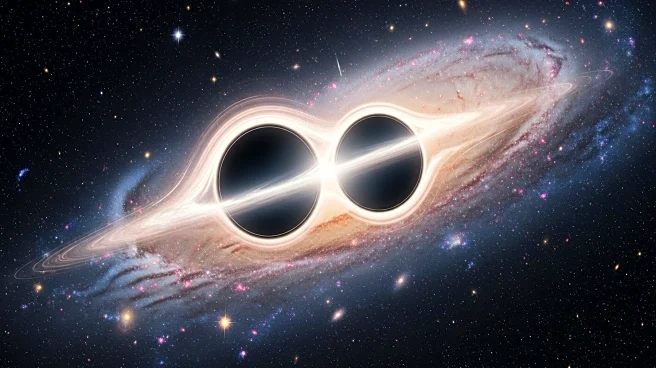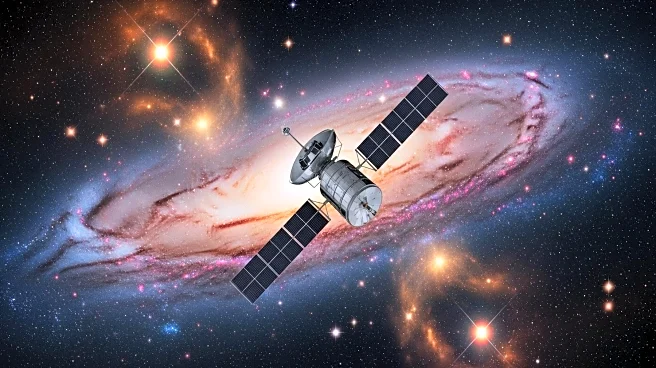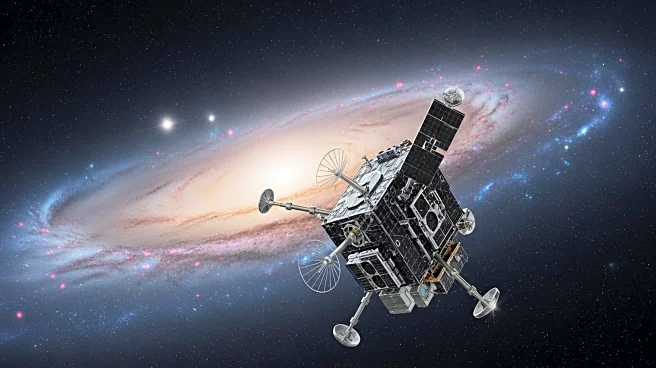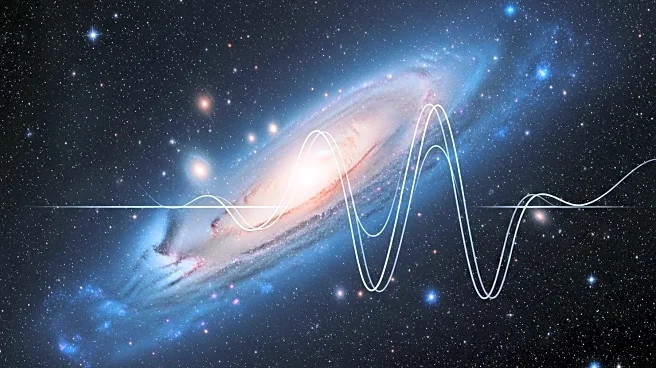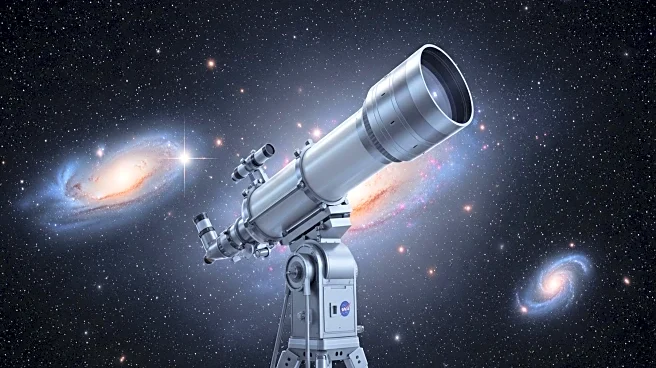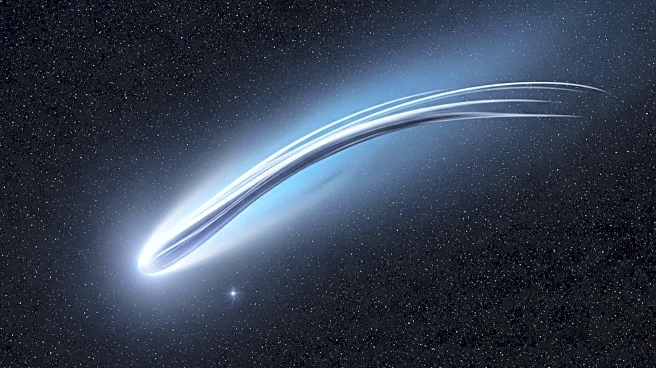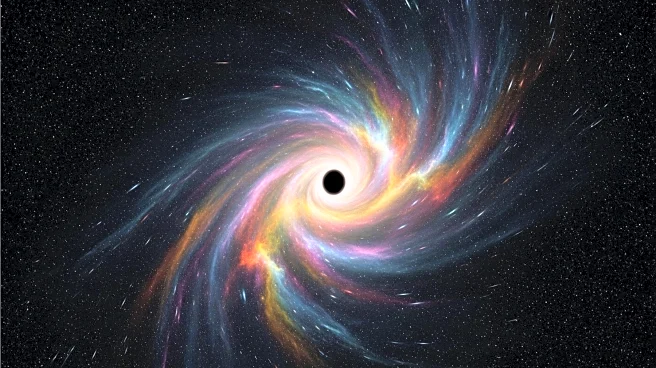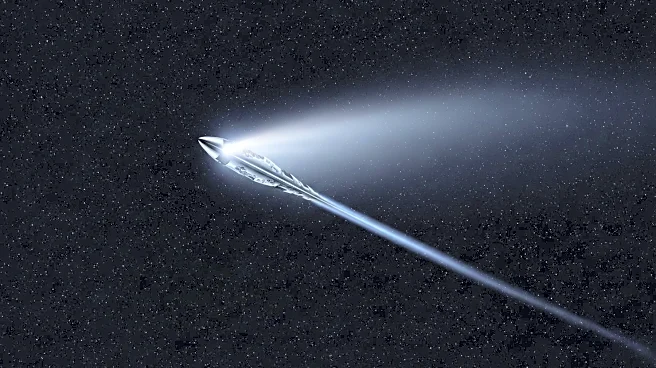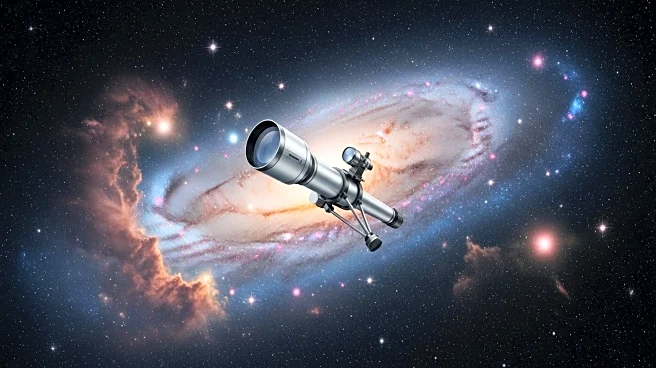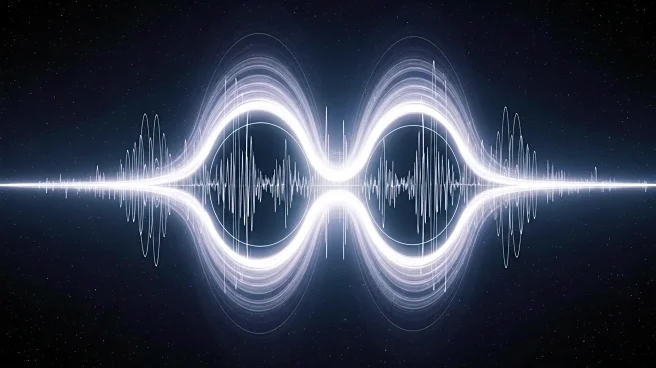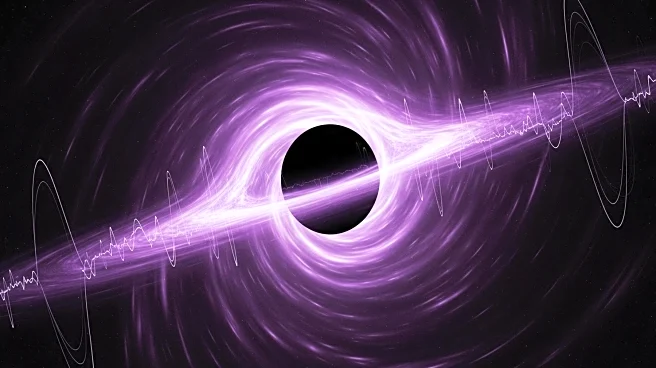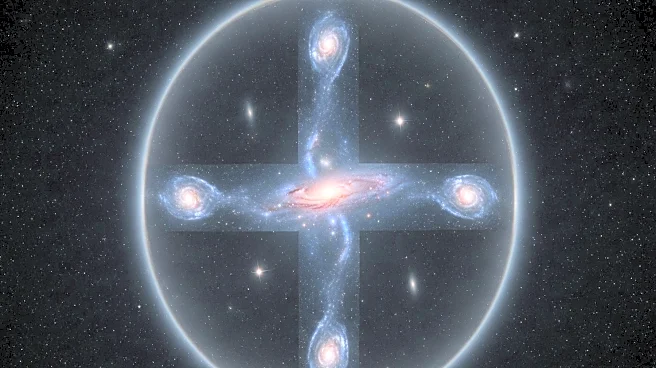What is the story about?
What's Happening?
Scientists at the Laser Interferometer Gravitational wave Observatory (LIGO) have announced a significant discovery involving a black hole merger that provides new insights into the nature of black holes and space-time. This event, detected by LIGO and the Flatiron Institute’s Center for Computational Astrophysics, confirms predictions made by Einstein, Stephen Hawking, and Roy Kerr. The merger created a black hole with the mass of 63 Suns, spinning at 100 revolutions per second. The findings, published in Physical Review Letters, offer a complete picture of a binary black hole merger, from collision to final reverberations, and confirm Hawking's area theorem and the Kerr metric.
Why It's Important?
This discovery is crucial as it provides strong evidence supporting Einstein's theory of general relativity and Hawking's area theorem, which have profound implications for our understanding of black holes. The confirmation of these theories could lead to breakthroughs in physics, including attempts to unify general relativity with quantum physics. The study also highlights the potential for future advancements in gravitational wave astronomy, with new detectors expected to enhance sensitivity and detection capabilities, potentially leading to a deeper understanding of space-time and the universe.
What's Next?
Future advancements in gravitational wave detection are anticipated, with new detectors like NASA's Laser Interferometer Space Antenna (LISA) expected to become operational by 2035. These detectors will offer more sensitive observations, allowing astronomers to test the characteristics of black holes more rigorously. This could lead to a revolution in astronomy and astrophysics, potentially resulting in a Theory of Everything and a new understanding of space-time properties.
AI Generated Content
Do you find this article useful?
